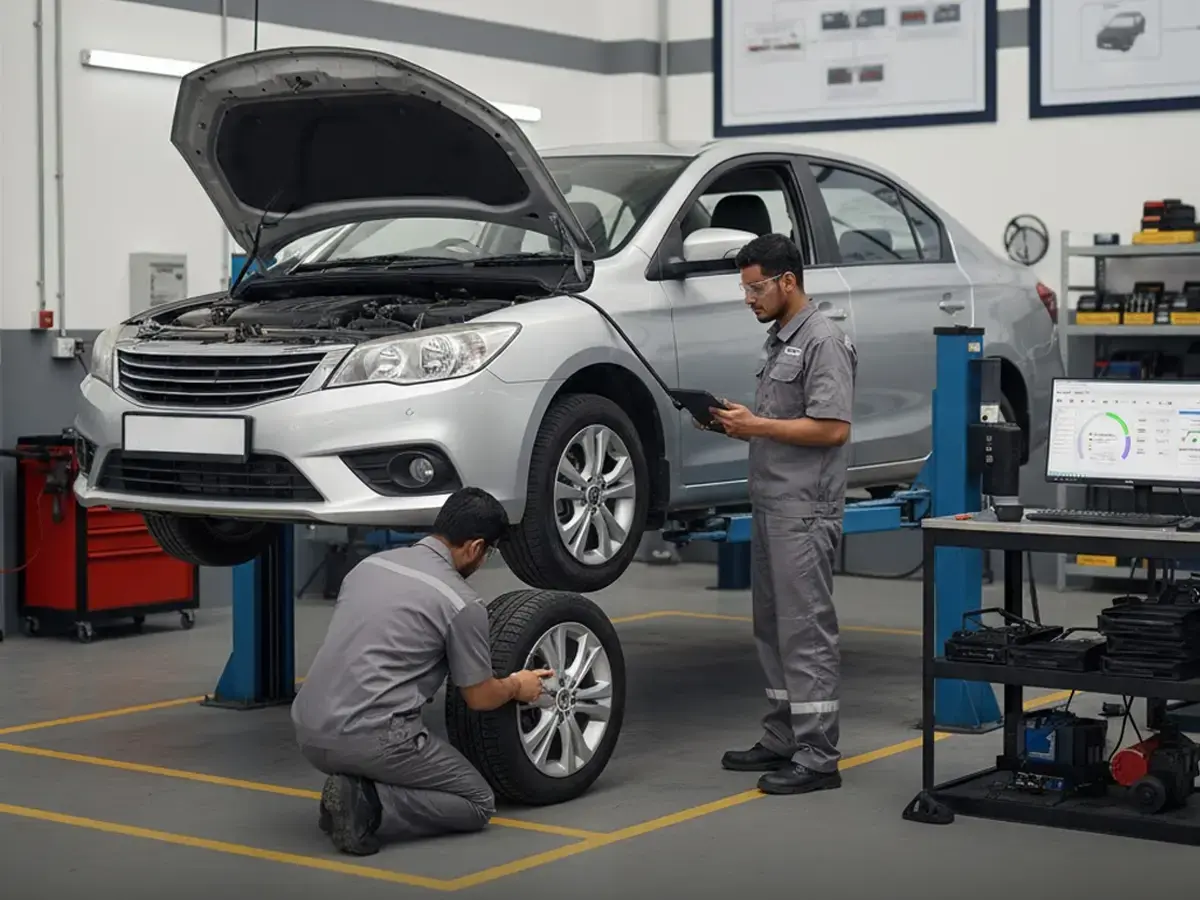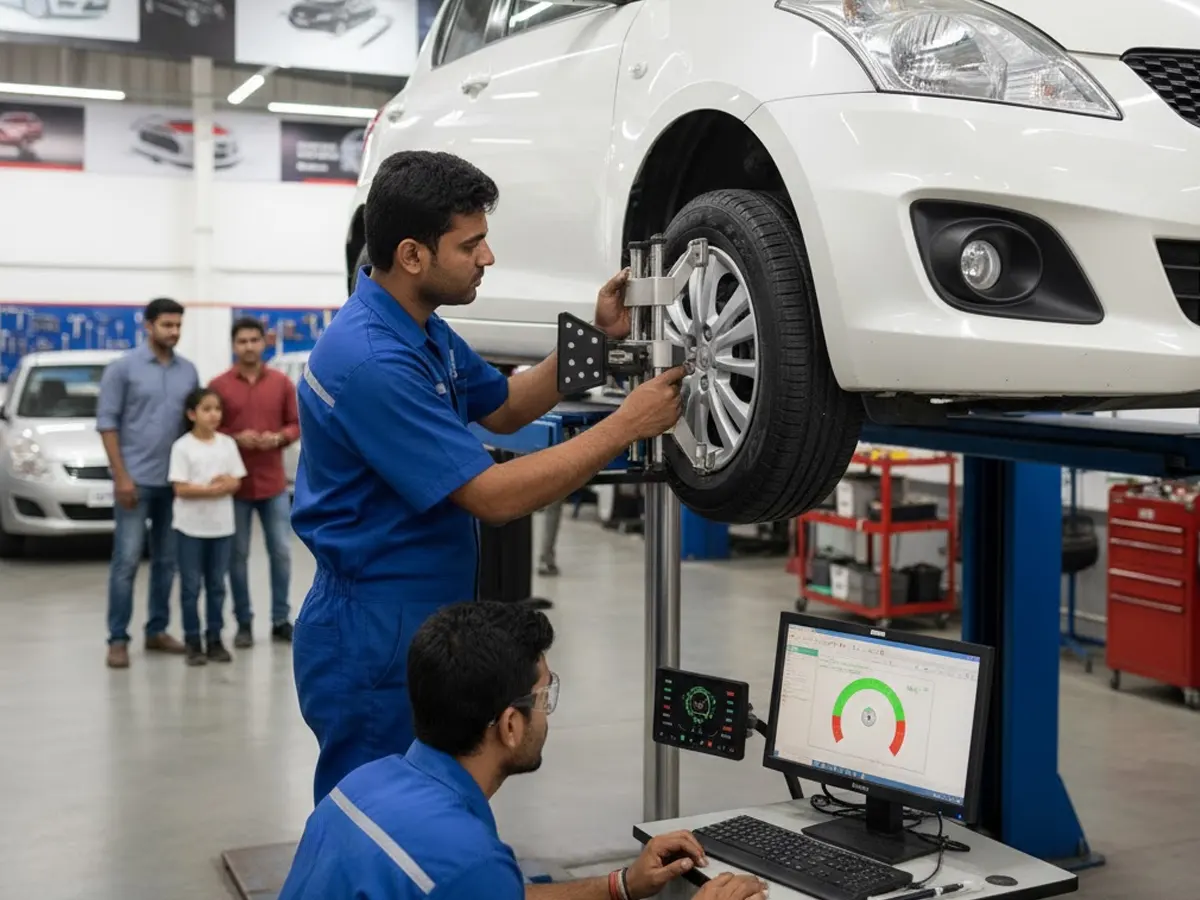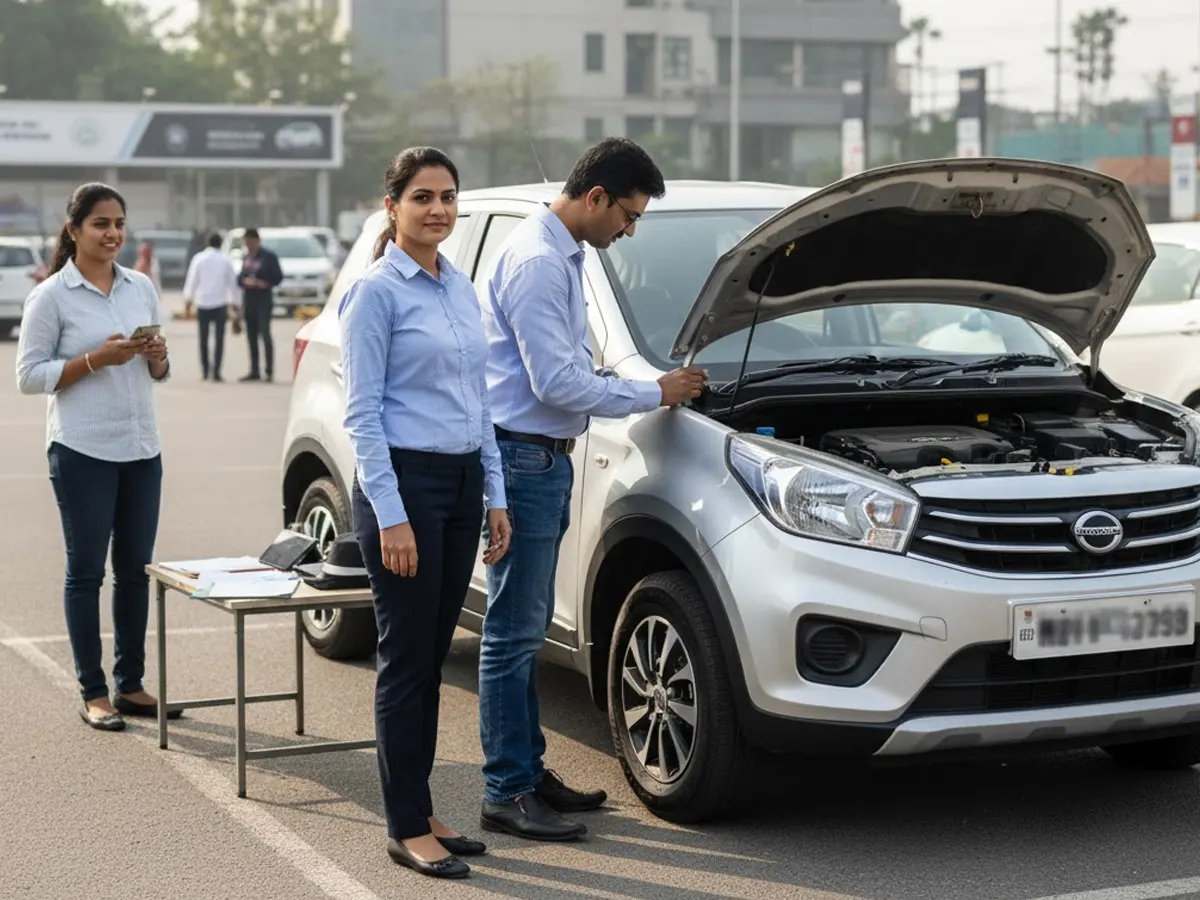

Seatbelt Challans for Rear Passengers: The Rule Most Car Owners Still Ignore
- 1Rear seatbelts are now legally mandatory and there is a ₹1,000 fine for violation
- 2Over 90% of passengers still skip rear seatbelts, making awareness a challenge
- 3Rear seatbelt challans can now be tracked easily online via CARS24 challan checker
Most modern cars now have seat belt reminders that start beeping the moment you turn on the engine for the front seats. But when it comes to the rear seat, the silence is telling. Thanks to the recent government provision, rear seat belt alarms have become mandatory in cars; however, most older cars do not have rear seat belt reminders or sensors, and this is exactly why many passengers in the back seat simply overlook buckling up.
According to the Ministry of Transport's road safety data, it is found that the non-compliance rate of rear seat belt use is more than 90%, which is one of the highest rates among developing countries. Predictably, back seat injuries have increased dramatically, and the government is now taking this lapse seriously. The rear seatbelt challan fine may seem minor, but it is a clear indication of a significant change in the way India is looking at in-car safety.
Rear Seat Belts Are Now a Legal Requirement
India has had a law for rear seatbelt usage for almost two decades, but it has not been taken seriously until recently. The order stems from the Central Motor Vehicles Rules (CMVR) notification in 2004, which took effect in 2005, that made wearing seatbelts mandatory for rear passengers, but only if the car had been fitted with them by the manufacturer.
The actual change came with the Motor Vehicles (Amendment) Act, 2019, which added weight to the rule through Section 194(B), which states a rear seatbelt challan fine of ₹1,000 per unbuckled passenger for anyone driving a vehicle or carrying passengers without wearing seatbelts.
After a number of severe accidents, including the 2022 case of former Tata Sons chairman Cyrus Mistry, the authorities have started to strictly enforce the rule across the country. Major cities such as Delhi, Mumbai, Bengaluru and Pune have now made rear seatbelt inspection a part of the routine checks. The effort is part of a wider initiative to bring India in line with the rest of the world in terms of road safety.
Why Rear Seat Belts Matter More Than You Think
In most modern cars, the rear seats are designed to provide the same crash protection as in the front, but only when the belts are used. Studies show:
- Unbelted rear passengers are three times more likely to suffer fatal injuries in frontal collisions.
- They can hit the front seats or dashboard with enough force to endanger even belted front occupants.
- Even airbags are far less effective when belts are not fastened.
Despite these facts, many still consider the back seat as a “safe or comfortable zone.” But with increased speed and mass highway travel, that comfort illusion is disappearing quickly.
Enforcement and Digital Challans
Rear seatbelt challan fine are now being monitored using manual and automated camera systems. Here’s how it typically works:
- Smart traffic cameras detect seatbelt non-usage for any visible passenger.
- The footage is verified by the authorities, and a challan is generated digitally.
- The fine is issued in the name of the vehicle owner and the information is sent via SMS and uploaded to the central traffic database.
To check if any penalty has been raised against your vehicle, you can easily verify it online via the Parivahan portal, your state transport website. Even better, you can take advantage of the CARS24 portal to perform e challan check online, which immediately loads all pending challans in one place, keeping you up to date.
Why Compliance Is Still Low
The use of rear seatbelts in India is still low for a number of reasons:
- No audible reminders: Unlike the front, rear belts on most cars do not trigger alarms when left unfastened for most cars.
- Hidden or unused belts: Seat covers often hide belt slots, and some older models use awkward lap belts.
- Awareness gaps: Many owners are not aware that police can fine them for unbelted rear passengers.
- Ride-sharing behaviour: Passengers in cabs or company cars rarely belt up.
Simple Habits to Stay Safe and Fine-Free
It is almost effortless to avoid a rear seatbelt challan fine or worse, a severe injury. A few habits can make all the difference:
- Make sure every rear passenger buckles up before you start driving.
- Avoid using seat covers that block access to rear belts.
- Check the rear belt locks and retractors regularly.
- When buying or selling a used car, make sure the rear belts are there and working, as they affect safety and the resale value of the car, because laws are becoming stricter.
- Do a periodic e challan check online to confirm no outstanding violations linked to your car.
It’s a matter of seconds that saves both money and lives.
The Real-World Impact of Ignoring Rear Seatbelts
Failing to wear a seatbelt in the back is not only at risk of a fine, but can also impact much more:
- Insurance claims: Non-compliance with rules may make it difficult to make claims for injuries in the event of accidents.
- Vehicle paperwork: Unpaid challans can delay RC transfers and renewals.
- Legal accountability: If an accident causes severe injury or death, the driver or owner of the vehicle could be put under further scrutiny if it is discovered that passengers were not belted. This is in contravention of the basic safety and road compliance standards.
The move to full seatbelt enforcement is inevitable. As the number of cars increases beyond the metros, authorities are unifying rules with the international standards for safety, and electronic monitoring makes it simpler than ever to enforce.
Summary
In the past, there were times when we just neglected to wear the rear seat belts because the car never reminded us to wear them. But that quiet oversight has been replaced by an active legal requirement, one that applies equally to both passengers and drivers.
The rear seatbelt challan fine may only be ₹1,000, but it carries a message that is worth a lot more, which is: safety in a car is not only for the front seats but for everyone. So, the next time that you hit the road, be it for a short ride to get to your office or a highway ride with your family, remember that every belt must click. It's one of the simplest, safest and smartest habits to build.
Frequently Asked Questions
Expand all



























